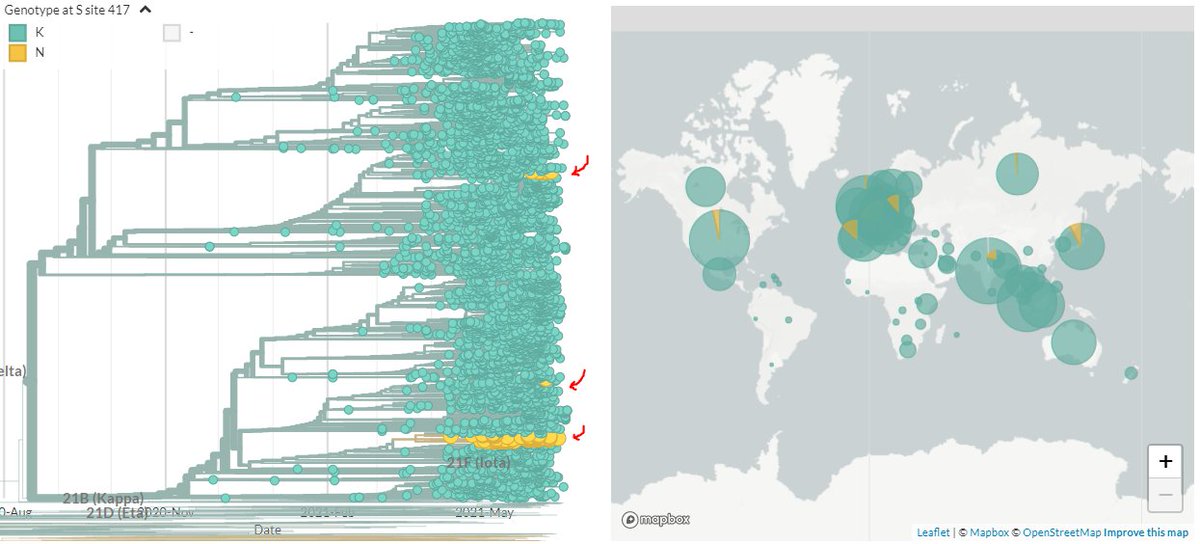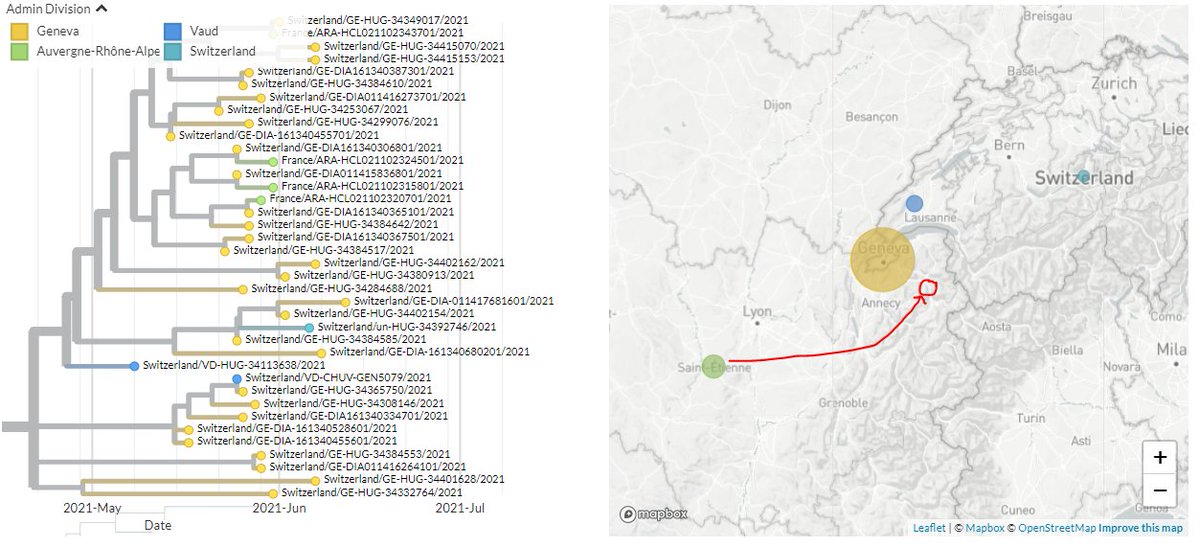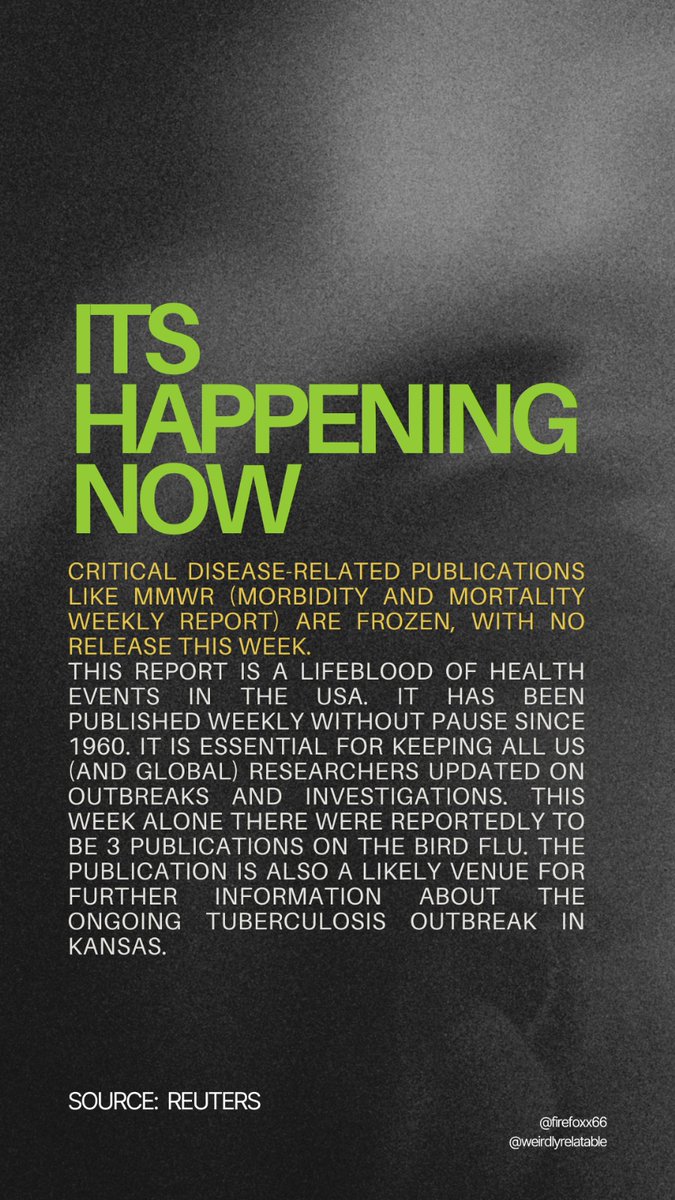Another brief update: many of the latest focal builds are still baking🥖, but I've gone ahead and pushed up some finished Delta-related runs.
In particular, I wanted to look a little at what's being called 'Delta Plus' = Delta + S:417N mutation
1/9
nextstrain.org/groups/neherla…
In particular, I wanted to look a little at what's being called 'Delta Plus' = Delta + S:417N mutation
1/9
nextstrain.org/groups/neherla…

S:417N has actually popped up multiple times in the Delta variant - it's of interest because it's thought to be related to immune escape & is also found in Beta.
But looking below, there are 2 main clusters - @PangoNetwork lineages AY.2 & AY.1
2/9
nextstrain.org/groups/neherla…
But looking below, there are 2 main clusters - @PangoNetwork lineages AY.2 & AY.1
2/9
nextstrain.org/groups/neherla…

I don't have 1 build that shows these clusters perfectly yet (working on it!), so we'll use 2 - the focal builds for Delta & S:K417.
Delta: nextstrain.org/groups/neherla…
S:K417: nextstrain.org/groups/neherla…
3/9

Delta: nextstrain.org/groups/neherla…
S:K417: nextstrain.org/groups/neherla…
3/9


Looking first at AY.1, it's found in Europe & Asia (a little US), with notable clusters in the UK, Switzerland, Portugal, Poland, & Japan.
(Delta build shown/linked first, then S:K417 build)
4/9
nextstrain.org/groups/neherla…
nextstrain.org/groups/neherla…

(Delta build shown/linked first, then S:K417 build)
4/9
nextstrain.org/groups/neherla…
nextstrain.org/groups/neherla…


Looking at AY.2, it's predominantly in the USA, particularly in California.
(Delta build shown/linked first, then S:K417 build)
5/9
nextstrain.org/groups/neherla…
nextstrain.org/groups/neherla…

(Delta build shown/linked first, then S:K417 build)
5/9
nextstrain.org/groups/neherla…
nextstrain.org/groups/neherla…


How do AY.1 & AY.2 differ?
In Spike, AY.1 has additional mutations at T95I (in Iota) & W258L, while AY.2 has additional mutations at V70F (deleted in Alpha & Eta) & A222V (in EU1).
AY.2 also has G142D, which is present in some AY.1 sequences.
6/9
In Spike, AY.1 has additional mutations at T95I (in Iota) & W258L, while AY.2 has additional mutations at V70F (deleted in Alpha & Eta) & A222V (in EU1).
AY.2 also has G142D, which is present in some AY.1 sequences.
6/9
Since I'm based in Switzerland, let's take a closer look at some of what we see there... 🇨🇭
7/9
7/9
Here's the Swiss AY.1 cluster - mostly in Geneva, Vaud & just over the border in France (location marked in red)
Note Geneva does a lot of sequencing, so more likely to pick up clusters!
Divergence view shows the order of transmission is unclear!
8/9
nextstrain.org/groups/neherla…

Note Geneva does a lot of sequencing, so more likely to pick up clusters!
Divergence view shows the order of transmission is unclear!
8/9
nextstrain.org/groups/neherla…


Switching to a Swiss-focused Delta build, we look at other Swiss Delta clusters.
The large Geneva cluster is the AY.1 we just looked at, but there are other clusters in Geneva, Basel Stadt & Land, & Bern.
9/9
nextstrain.org/groups/neherla…
The large Geneva cluster is the AY.1 we just looked at, but there are other clusters in Geneva, Basel Stadt & Land, & Bern.
9/9
nextstrain.org/groups/neherla…
• • •
Missing some Tweet in this thread? You can try to
force a refresh











